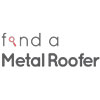Metal roofs are becoming increasingly popular among homeowners, thanks to their durability, energy efficiency, and aesthetic appeal. One of the key advantages of metal roofing is its long lifespan, which can be up to 50 years or more, depending on various factors. In this article, we will explore the different factors that affect the lifetime of a metal roof and how to maximize its longevity.
Factors that Affect Metal Roof Lifetime
The lifespan of a metal roof depends on various factors, including the following:
Material Quality
The quality of the metal used in the roofing system can significantly affect its lifespan. High-quality metals are less prone to corrosion, rusting, and fading, which can shorten the roof’s lifespan. Copper and stainless steel are among the most durable and long-lasting metal roofing materials, while aluminum and zinc are also popular choices.
Installation Quality
The quality of the installation process can also impact the lifetime of a metal roof. Poor installation can result in leaks, gaps, and other issues that can compromise the roof’s integrity and longevity. It’s essential to hire a professional roofing contractor with experience in installing metal roofs and ensure that the installation meets the manufacturer’s specifications.
Roof Pitch and Design
The pitch and design of the roof can also affect its lifespan. Roofs with steeper pitches are less prone to water pooling, which can cause damage over time. Additionally, certain designs, such as standing seam roofs, are more durable and long-lasting than others.
Climate and Weather Conditions
The climate and weather conditions in the area where the roof is installed can also impact its lifespan. Extreme temperatures, high winds, heavy rain, and hail can all take a toll on the roof over time. Metal roofs are designed to withstand these elements, but it’s important to choose a roofing material that is appropriate for the local climate.
Maintenance and Care
Regular maintenance and care can also help prolong the lifespan of a metal roof. This includes regular inspections, cleaning, and repairs as needed. Proper care can prevent small issues from turning into bigger problems that can compromise the roof’s integrity.
How to Maximize Metal Roof Lifetime
Now that we understand the factors that affect metal roof lifetime, let’s explore some tips for maximizing its longevity:
Choose High-Quality Materials
Investing in high-quality metal roofing materials can go a long way in ensuring a longer lifespan. It may be more expensive upfront, but it can save you money in the long run by avoiding costly repairs or replacements.
Hire a Professional Roofing Contractor
Make sure to hire a reputable roofing contractor with experience in installing metal roofs. A professional installation can prevent issues that can compromise the roof’s integrity and shorten its lifespan.
Regular Maintenance and Inspections
Regular inspections and maintenance can help identify issues early on and prevent them from becoming bigger problems. It’s recommended to have your metal roof inspected and maintained at least once a year by a professional.
Address Issues Promptly
If you notice any issues with your metal roof, such as leaks, gaps, or damage, it’s important to address them promptly. Ignoring them can lead to more significant problems that can compromise the roof’s integrity and shorten its lifespan.
Consider Coatings and Finishes
Coatings and finishes can help protect metal roofs from the elements and increase their lifespan. They can provide additional protection against corrosion, rusting, and fading and can also enhance the roof’s appearance.
Choose the Right Color
The color of your metal roof can also impact its lifespan. Lighter colors reflect heat and sunlight, which can prevent damage from UV rays and heat. Darker colors, on the other hand, absorb heat and can lead to faster degradation.
Opt for Energy-Efficient Features
Energy-efficient features, such as reflective coatings or insulation, can help reduce the amount of heat that the roof absorbs. This can prevent damage from UV rays and heat and can also lower energy bills by reducing the need for air conditioning.
Conclusion
In conclusion, the lifespan of a metal roof depends on various factors, including the quality of the materials and installation, roof pitch and design, climate and weather conditions, and maintenance and care. By taking steps to address these factors and maximize the roof’s longevity, you can ensure that your metal roof provides durable and reliable protection for your home or business for many years to come.



